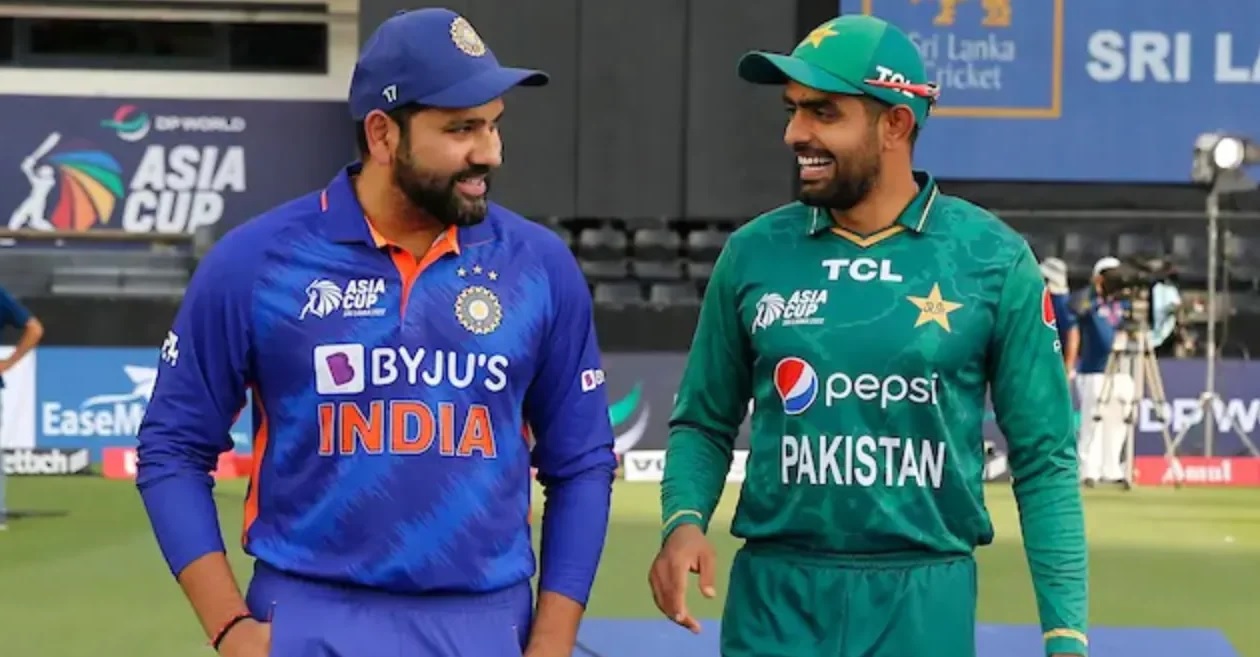
Rohit Sharma, Babar Azam (Photo Source: Twitter)
Ishan Kishan and Hardik Pandya’s 138-run fifth wicket partnership was the highlight for India against Pakistan in their Asia Cup Group A match which ended as a no result after rain washed out the second half of the game at Pallekele on Saturday.
India began cautiously after winning the toss and electing to bat with Rohit Sharma and Shubman Gill seeing off the 4.2 overs before first rain break.
But on return, India lost quick wickets with skipper Sharma and Virat Kohli getting bowled by Shaheen Afridi. Haris Rauf then picked Gill and Shreyas Iyer to reduce India to 66/4 in 14.1 overs.
However, Kishan and Pandya resurrected India’s innings and saved them the blushes. The two took India beyond 200, nullifying Pakistani spinners.
However, just when the two looked like taking the match away from Pakistan, pacer Rauf got rid of Kishan to put the brakes.
Pandya fell to a slower delivery from Afridi before Naseem Shah got the wicket of Shardul Thakur to wipe out India batting order before they could reach 250. The tail wagged a bit with Jasprit Bumrah hitting 16 off 14 balls. India were all out for 266 in 48.5 overs.
Pakistan could not bat in their innings as rain lashed heavily.
“I think both (Rohit and Kohli) were crucial wickets, but I think Rohit’s I enjoyed more. I think the new ball might seam and swing but [batting] should be easier after that,” said Afridi after the match.
Pakistan have qualified for the Super Fours from Group A. India play Nepal on Monday in the last league encounter.
The decline is primarily due to damage to the "heart-brain link" triggered by chronic kidney…
A French-style open-air café is drawing Delhiites back to a river they long forgot
The handset features a dual rear cameras, 6.72-inch 144Hz display, IP64 water resistance, and up…
Delhi Police raided a late-night illegal bar in Samaypur Badli, detaining 25 people and seizing…
A rear-end crash near Delhi Haat triggered a blaze that gutted both vehicles, though no…
Court grants probe agency more time as NIA pursues wider links in Red Fort blast…